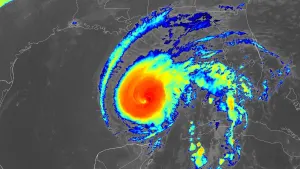
Antarctica’s penguins are in crisis; drowning, not breeding
Antarctica’s emperor penguins are in crisis.
Emperor penguins are the heaviest of the penguin species and require a tending platform that consists of stable sea-ice to tend to their chicks.
It’s essential that the platform stays reliable from April, when they arrive, until December when their chicks hatch and they move back into the open sea.
However, if the sea-ice breaks up before the baby penguins are equipped with the correct feathers to start swimming, it can have devastating effects on the population.
THOUSANDS OF BABY EMPEROR PENGUIN DROWNED IN 2016
Scientists from the British Antarctic Survey report that thousands of emperor penguin chicks drowned when their sea-ice platform was destroyed because of severe weather in 2016.
The devastation happened at the Weddell Sea in Antarctica.

Image: Pexels, Creative Commons
This isn’t the first case of devastation to hit the emperor penguin population Antarctica; it’s part of an ongoing problem.
MAJOR EMPEROR PENGUIN BREEDING GROUND GONE BARREN
A recent Antarctic Science study found that Antarctica’s second-biggest breeding ground for emperor penguins is in jeopardy.
For years Halley Bay was considered a cold-enough site for penguins to flock yearly for breeding purposes, despite global warming.
The breeding ground is known to see anywhere from 15,000 to 24,000 pairs of penguins.
Almost zero penguins have been at the Halley Bay site since 2016.
“Normally about 8 per cent of the world’s emperor penguin population breeds at Halley Bay,” according to study author Phil Trathan.
Emperor penguins are known for being able to breed in the most severe weather conditions, since the male incubates the couple’s egg.
Scientists say that a sharp decline in weather and climate conditions is responsible for breaking apart the ice, making it more difficult for penguins to incubate and take care of their chicks.
What has scientists even more concerned is the fact that Halley Bay has long been considered a ‘climate refuge’ in one of the coldest parts of the continent.
It’s the one place “where in the future you can expect to always have emperors,” Trathan says.
If the emperor penguins cannot breed in one of the coldest places on earth, how is the population expected to survive?
A study from 2014 predicts that the emperor penguin population will likely fall by at least 19 per cent by the year 2100.









